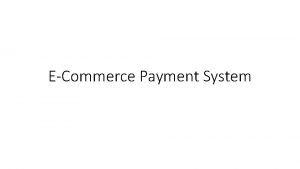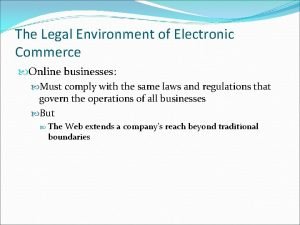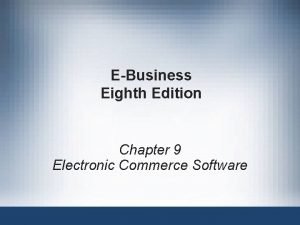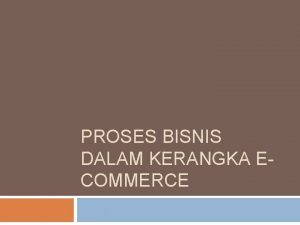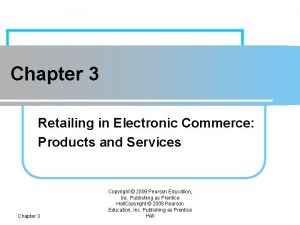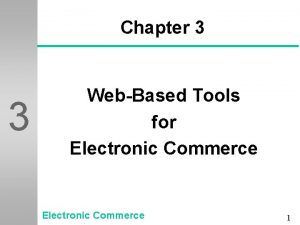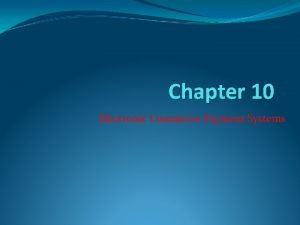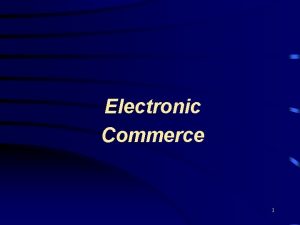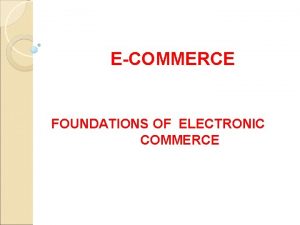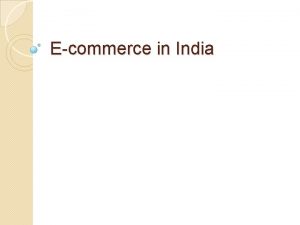ECOMMERCE IN INDIA INTRODUCTION Electronic commerce or ecommerce











- Slides: 11

E-COMMERCE IN INDIA

INTRODUCTION Electronic commerce (or e-commerce) encompasses all business conducted by means of computer networks. �

STAKEHOLDERS � 3 main flows in e-commerce

HOW THE MARKET EVOLVED IN INDIA First wave: advent of online Naukri and Shaadi Second wave: Online travel, Online retail

FIRST TO SECOND WAVE: FUNDAMENTAL ENABLERS FALLING IN PLACE

INTERNET PENETRATION

PAYMENT LANDSCAPE The number of cards per capita in India is a mere 0. 2 and is among the lowest in the world.

CHALLENGES e-Commerce laws in India � � � There are no specific e-Commerce laws in India. The sector is governed by the IT Act 2000, which regulates the legal obligations of sellers and buyers of goods and services in cyberspace. e-Commerce companies also need to comply with banking and financial laws, where applicable. The lack of law firms or lawyers specializing in e-Commerce laws compounds the problem. Low entry barriers leading to reduced competitive advantages � � The rapid growth of the e-Commerce sector is attracting new players. The initial investment required to start an online venture is as low as a US$10, 000– 20, 000. This enables new companies to easily replicate the existing business models and, thereby, increases competition in the sector

CHALLENGES FOR ECOMMERCE SECTOR Urban phenomenon � India’s e-Commerce market is mainly restricted to urban areas, with the bulk of the business being restricted to cities. Internet usage in � rural areas is limited. This could be due to several reasons including low internet speed and internet user base (20 million out of a total of 121 million in 2011), though rural areas account for 70% of the country’s population.

CONCLUSION • India being pioneer most countries to adopt EDI (early adoption) • General and widespread acceptance • Innovation and Updations • Migration from Manual to Electronic • Rules and Regulatory Framework from supportive Governments migration and structured Framework environment • Emergence of multiple EDI service providers.

 Location-based commerce (l-commerce)
Location-based commerce (l-commerce) Digital accumulating balance payment system
Digital accumulating balance payment system The legal environment of electronic commerce
The legal environment of electronic commerce Enterprise class electronic commerce software
Enterprise class electronic commerce software The internet the web and electronic commerce
The internet the web and electronic commerce Proses bisnis dalam kerangka electronic commerce
Proses bisnis dalam kerangka electronic commerce Enterprise class electronic commerce software
Enterprise class electronic commerce software Retailing in electronic commerce products and services
Retailing in electronic commerce products and services Web based tools for electronic commerce
Web based tools for electronic commerce Edi e commerce
Edi e commerce E commerce security meaning
E commerce security meaning Electronic commerce payments inc
Electronic commerce payments inc

